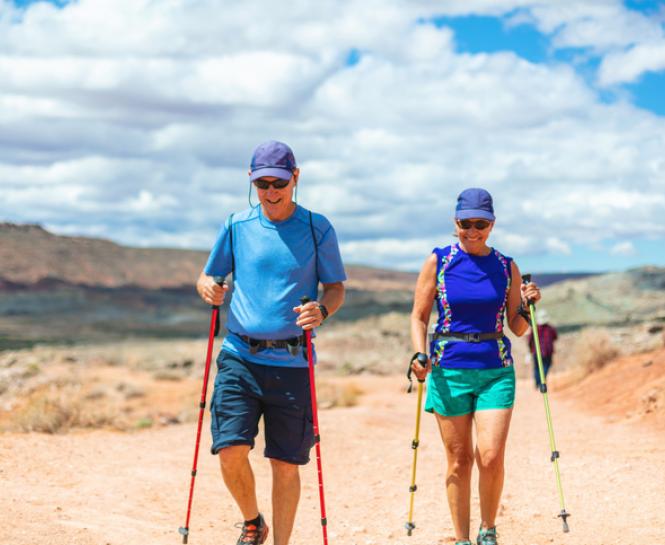What are blood clots?
Blood clots—or deep vein thrombosis (DVT)—can develop when traveling for more than four hours on a plane, in a car or on a train when your legs are not moving for long periods. The likelihood of developing a blood clot increases the longer you sit without moving your legs.
A blood clot will often dissolve into your body without you knowing it occurred. However, a blood clot can also break off and travel to your lungs, blocking blood flow. This blockage, known as a pulmonary embolism (PE), can be fatal.
What are the symptoms of blood clots?
Not all people with DVT will experience symptoms. When symptoms occur, they may include:
- Skin feeling warm
- Unusual red skin color
- Swelling in the leg or arm
- Unexplained pain or tenderness
Symptoms of a pulmonary embolism may include:
- Anxiety
- Chest pain that worsens when you cough or take a deep breath
- Coughing up blood
- Fainting or lightheadedness
- Irregular or fast heartbeat
- Trouble breathing
Immediately seek emergency medical attention if you are showing symptoms.
What are the risk factors for blood clots?
You may be at risk for developing a blood clot depending on risk factors, including:
- Age 40 years or older
- Obesity
- Current or recent pregnancy
- Smoking
Certain health conditions can also increase your risk, including:
- A catheter in a large vein
- Blood-thinning medication
- Cancer treatment
- Hormone replacement therapy
- Limited mobility, either temporary or permanent
- Personal or family history of blood clots
- Personal or family history of a genetic clotting disorder
- Recent injury or surgery within the past 90 days
- Varicose veins
Can I reduce my risk for blood clots while traveling?
Talk to your doctor before you travel to address any concerns.
- Know the signs and symptoms of a blood clot.
- Know your risk factors, especially if you are on certain medications such as blood thinners.
- Take breaks from sitting to improve circulation by:
- Alternately flexing your ankles and pointing your toes
- Massaging your legs
- Lifting your ankles above your waist, such as by pulling your ankles to your chest
- Walking around
- Wear compression socks or stockings to improve blood flow and reduce swelling.







